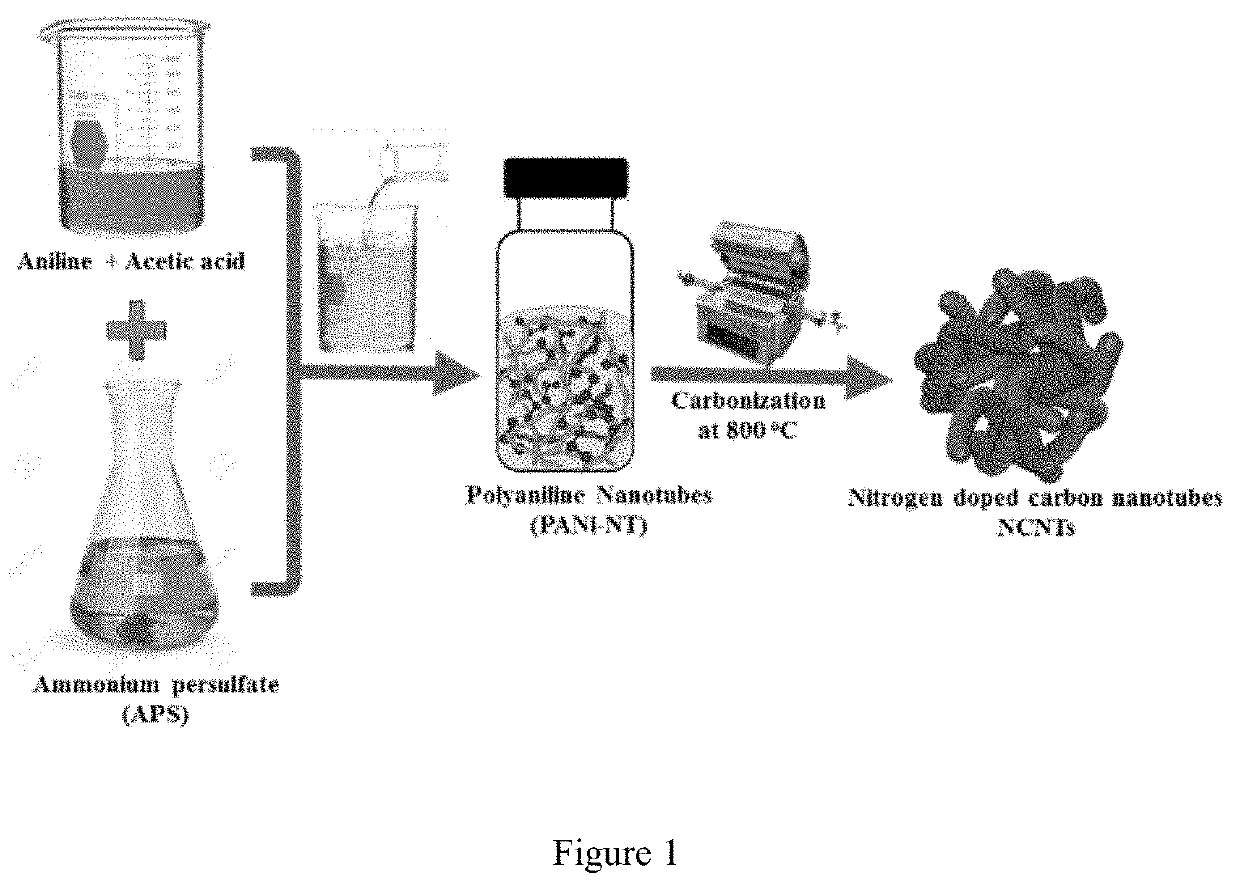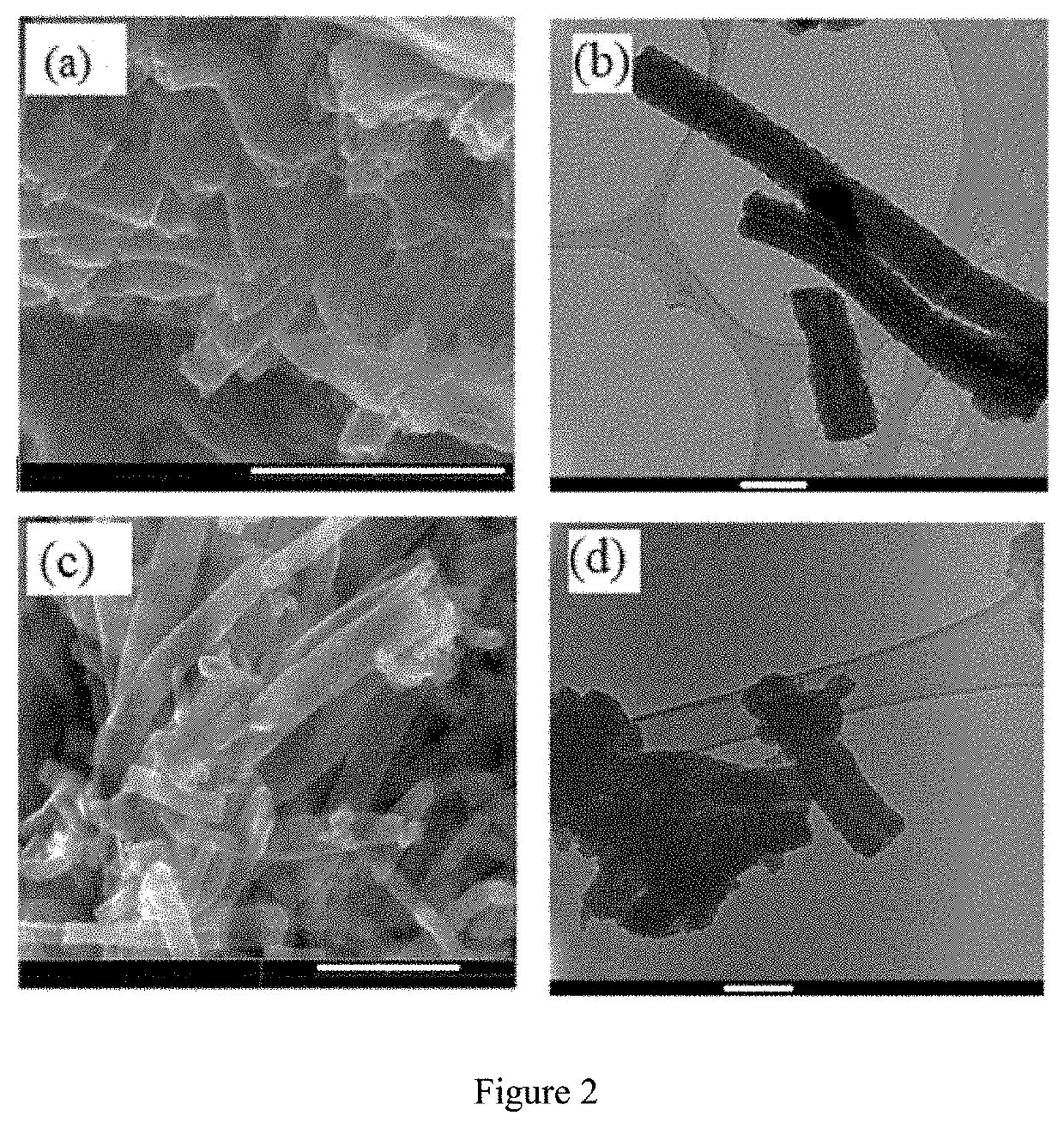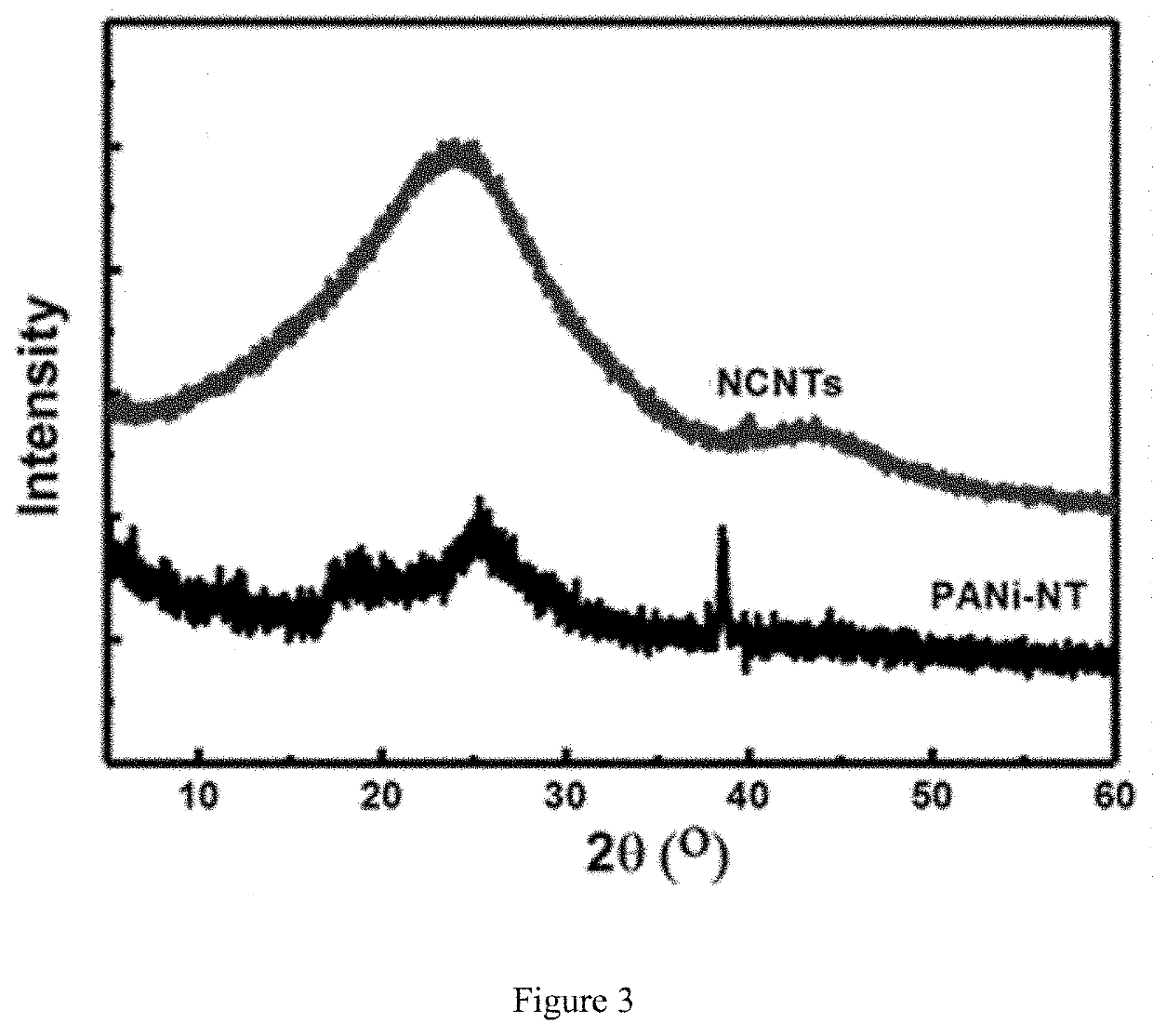Supercapacitor
a supercapacitor and supercapacitor technology, applied in the field of supercapacitors, can solve the problems of inherently limited power generation and severely limit the potential of many applications, and achieve the effects of high power density, high surface area, and high energy density
- Summary
- Abstract
- Description
- Claims
- Application Information
AI Technical Summary
Benefits of technology
Problems solved by technology
Method used
Image
Examples
example 1
Synthesis of N-CIVTs
[0108]A schematic of a synthesis procedure adopted for the production of N-CNTs is shown in FIG. 1. N-CNTs were prepared by carbonization of polyaniline nanotubes (PANi-NT). PANi-NT was prepared by rapid-mixing aniline and ammonium persulfate (APS) solutions in presence of acetic acid, followed by vigorous stirring for 20 seconds. The concentration of aniline, APS and acetic acid were changed from 0.01 to 0.3 M, 0.015 to 0.35 M and from 0.05 to 0.5 M, respectively to optimize the PANi-NT structure. The reaction mixture was subsequently left without stirring for 12 hours. The reaction conditions were optimized by changing the reactants concentrations (aniline, ammonium persulfate and acetic acid) several times to get PANi in tubular structure.
[0109]After washing and drying, the PANi-NT was carbonized at different temperatures from 800° C. to 1,200° C. for 12 hours, thereby obtaining N-CNTs.
example 2
Characterization of N-CNTs
[0110]Ultra-long open-end nitrogen-doped carbon nanotubes (N-CNTs) were prepared by pyrolysis of polyaniline nanotubes (PANi-NT) under N2 atmosphere. FIG. 2 SEM and TEM images of PANi-NT (FIGS. 2(a) and 2(b), respectively) and N-CNTs (FIGS. 2(c) and 2(d), respectively) obtained after carbonization of the PANi-NTs. The image allows appreciating a number of nanotubes having an average axial length of a few microns. The PANi-NT polymer is observed to keep its shape after carbonization, with smooth surfaces and transparent enough to confirm the hollow nature of the nanotubes.
[0111]FIG. 3 shows X-Ray Diffraction (XRD) patterns of PANi-NT and N-CNTs. The characteristic diffractions of PANi-NT are centred at 2θ values of 20.1° and 25.3°, which attribute to the crystallinity and the coherence length of aligned polymer chains. N-CNTs have two broad diffraction peaks near 25° and 43°, which confirm the graphitic layer structure or graphene interlayer space of N-CNTs....
example 3
Electrochemical Characterizations of the Electrode Comprising N-CNTs
[0114]Therefore, each electrode has been tested separately in a half-cell configuration against lithium metal. This ensures the determination of the exact operation voltage and capacity for each electrode. One of the biggest problems for hybrid supercapacitor is the wrong mass loading for anode and cathode (the imbalance of kinetics between the two electrodes). Accordingly, the electrode comprising N-CNTs was tested as the anode electrode of a half-cell against a lithium metal electrode acting as cathode.
[0115]The anode electrode of the half-cell test was prepared by mixing of N-CNTs as the active anode material, acetylene black as a conductive additive, and carboxy methyl cellulose as binder in the weight percentages of 80%, 10% and 10%, respectively. The mixture was stirred for 3 hours to make a homogeneous paste. Then, the mixture paste was coated on copper substrate used as current col...
PUM
| Property | Measurement | Unit |
|---|---|---|
| Fraction | aaaaa | aaaaa |
| Fraction | aaaaa | aaaaa |
| Fraction | aaaaa | aaaaa |
Abstract
Description
Claims
Application Information
 Login to View More
Login to View More - R&D
- Intellectual Property
- Life Sciences
- Materials
- Tech Scout
- Unparalleled Data Quality
- Higher Quality Content
- 60% Fewer Hallucinations
Browse by: Latest US Patents, China's latest patents, Technical Efficacy Thesaurus, Application Domain, Technology Topic, Popular Technical Reports.
© 2025 PatSnap. All rights reserved.Legal|Privacy policy|Modern Slavery Act Transparency Statement|Sitemap|About US| Contact US: help@patsnap.com



